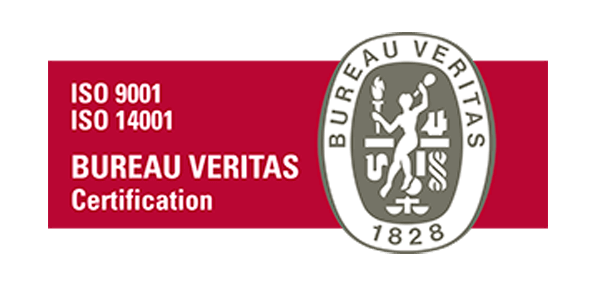Trend
Leather Goods Manufacturer
November 8, 2024
Leather Goods Manufacturer History
The history of leather goods manufacturer is ancient, tracing back thousands of years, as humans discovered the value of animal hides for making clothing, footwear, and accessories. Leather goods manufacturing has evolved from basic survival items to a sophisticated, global industry that spans practical goods to high-end luxury items. Today, it balances craftsmanship and heritage with innovation and sustainability, addressing modern consumers’ values while retaining the timeless appeal of leather products.
What is a Leather Goods Manufacturer?
A leather goods manufacturer specializes in creating a range of products crafted from leather, such as bags, wallets, belts, jackets, footwear, and accessories. This industry combines traditional craftsmanship with modern production techniques, with each product requiring specialized knowledge in leather selection, cutting, stitching, and finishing. Here’s an overview of the key elements involved in leather goods manufacturing:
Leather Selection
Manufacturers typically work with a variety of leathers such as full-grain, top-grain, genuine leather, and suede. Each type has unique qualities affecting durability, appearance, and price.
At Pytón we can advise you throughout the whole process.

Design & Prototyping
Manufacturers often create prototypes to test the design’s functionality, durability, and aesthetics before full-scale production.Design teams work to create functional and stylish products tailored to market trends and brand identity. High-end brands often invest in luxury designs, while others focus on utility and durability. Precision patterns are created for each product component. These patterns are essential for cutting the leather in the right shape and size.

Production Process
– Cutting: Leather pieces are cut from large hides according to patterns, using machines or by hand, depending on the manufacturer’s process. Cutting must minimize waste, as leather is an expensive material.
– Skiving & Splitting: Thicker leather pieces may need to be split or skived (thinned) for specific uses or to achieve uniform thickness, particularly for lighter products.
– Sewing & Stitching: Skilled workers sew the leather pieces together, often using specialized industrial sewing machines. Some luxury brands use hand stitching for higher quality.
– Finishing: Edges are polished, dyed, and sealed. Some products also undergo treatments like waterproofing, embossing, or custom color finishes.
Many leather goods, especially bags and belts, incorporate metal hardware such as zippers, buckles, and rivets. Manufacturers source durable, high-quality hardware to ensure longevity.

Quality Control
Throughout the production process, strict quality control ensures consistency in stitching, leather quality, color matching, and finishing. High-end brands often have multiple rounds of quality checks.
Packaging and Distribution
Once products pass quality control, they are packaged, labeled, and prepared for distribution. Luxury leather goods often include dust bags and premium packaging to enhance the unboxing experience.
Sustainability and Ethics
Modern consumers are increasingly aware of environmental impact, prompting leather manufacturers to adopt sustainable practices. This includes using responsibly-sourced leather, reducing chemical usage in tanning, and opting for eco-friendly packaging.
Market Segmentation
– Luxury: High-end leather goods, often handmade with premium materials, cater to the luxury market. Examples include designer bags, exclusive wallets, and bespoke items.
– Mid-range: Brands focusing on both style and affordability, often using a mix of synthetic and genuine leather.
– Mass-market: Affordable leather products or alternatives aimed at everyday use, often with synthetic leather for cost efficiency.
Finding a Leather Goods Manufacturer
If you’re looking to partner with or start a leather goods manufacturing business, you may want to explore:
– Manufacturers with flexibility for custom designs
– Factories with experience in your product category
– Sourcing partnerships to secure high-quality leather and hardware. Pytón has over 80 years of experience not only providing the best leathers that can suit your brand but also a know-how on leather goods manufacturers.
Visit our website and contact our team for more information.

Key Regions for leather goods manufacturer
The leather goods manufacturing industry is spread across various regions worldwide, each known for unique expertise, quality standards, and craftsmanship. Here are some key regions famous for their leather goods manufacturing:

– Italy
Italy is famous for luxury leather goods, particularly handbags, shoes, and accessories. Italian leather is highly valued for its quality, texture, and finishing. The Tuscan region, especially Florence, is known for its vegetable-tanned leather, a sustainable tanning method that produces rich, natural colors and durable finishes.
– Spain
Spanish leather goods are valued for their durability, craftsmanship, and blend of tradition with modern styles. The country is also recognized for its emphasis on sustainable practices, especially in the luxury sector.
– France
French leather goods are synonymous with sophistication and elegance, especially in luxury markets. French artisans are celebrated for their meticulous attention to detail, with brands often creating each item by hand.
– Portugal
Portuguese leather goods are known for their durability, quality, and ethical manufacturing. The country has a growing reputation in the fashion and luxury markets, with a focus on handmade leather footwear.
– India
Indian leather goods are prized for affordability and versatility. India’s large tanning industry supplies both finished and semi-finished leather globally, and many regions are increasingly adopting eco-friendly tanning methods.
– China
Chinese leather goods manufacturing is highly efficient, with large-scale facilities capable of producing goods quickly. Although traditionally focused on lower-cost products, many Chinese manufacturers are now focusing on quality improvement and luxury brand partnerships.
– Brazil, Japan, UK and US
Other countries such as Brazil, Japan, UK and US are also renowned for their leather goods manufacturers.



